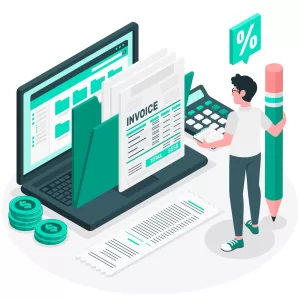5 best points to optimise receivables in service business

Optimizing accounts receivables in service business involves several strategies:
- Invoice Promptly: Issue invoices immediately after service delivery to accelerate payment cycles.
- Clear Terms: Define payment terms clearly and ensure they are communicated effectively to clients.
- Payment Options: Offer multiple payment methods to make it convenient for clients to pay promptly.
- Follow-up: Implement a systematic follow-up process for overdue payments.
- Credit Management: Assess the creditworthiness of new clients and set credit limits accordingly.
- Use Software: Leverage accounting software with features that streamline invoicing, tracking, and collection processes.
Automating receivables in service business can be achieved through the following steps:
- Invoicing Software: Utilize invoicing software that automatically generates and sends invoices based on service delivery.
- Payment Reminders: Set up automated email or SMS reminders for upcoming and overdue payments.
- Online Payments: Integrate online payment gateways to facilitate quick and easy payments.
- Reconciliation Tools: Employ software that automatically reconciles incoming payments with outstanding invoices.
- Reporting: Use tools that generate real-time reports on receivables status for better cash flow management.
Why Net4Accounting to optimise receivables in service business ?
Net4Accounting stands out as a premier solution in the market, specifically tailored to master the complexities of accounts receivable for service businesses. Its intuitive design and powerful automation tools ensure that invoicing, tracking, and collection processes are not only streamlined but also error-free, enabling businesses to maintain optimal cash flow. With Net4Accounting, service providers can focus on delivering exceptional services rather than being bogged down by financial administration. Its precision and reliability make it an indispensable tool for any service business looking to enhance financial efficiency and stability.


















